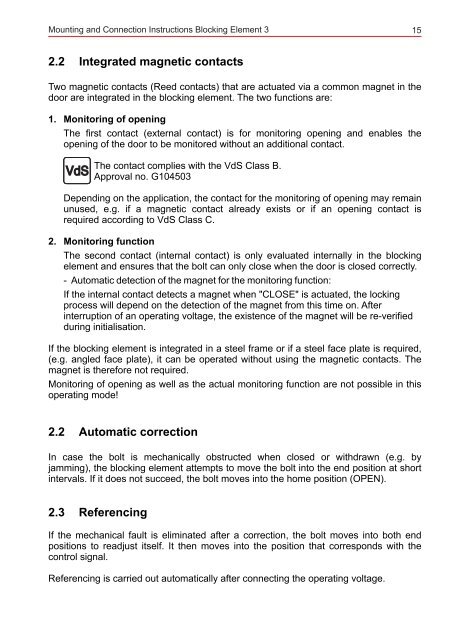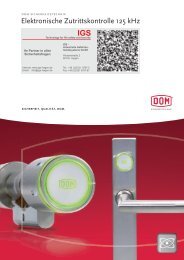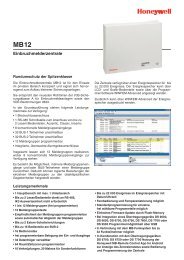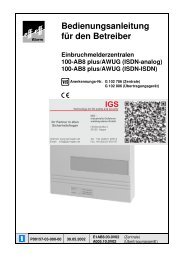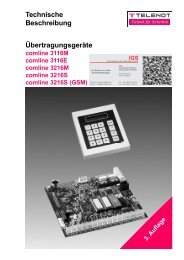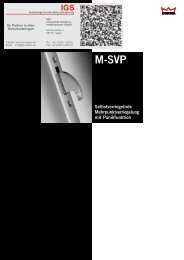Honeywell - Elektromechanisches Sperrelement 3 - IGS-Industrielle ...
Honeywell - Elektromechanisches Sperrelement 3 - IGS-Industrielle ...
Honeywell - Elektromechanisches Sperrelement 3 - IGS-Industrielle ...
Sie wollen auch ein ePaper? Erhöhen Sie die Reichweite Ihrer Titel.
YUMPU macht aus Druck-PDFs automatisch weboptimierte ePaper, die Google liebt.
Mounting and Connection Instructions Blocking Element 3<br />
15<br />
2.2 Integrated magnetic contacts<br />
Two magnetic contacts (Reed contacts) that are actuated via a common magnet in the<br />
door are integrated in the blocking element. The two functions are:<br />
1. Monitoring of opening<br />
The first contact (external contact) is for monitoring opening and enables the<br />
opening of the door to be monitored without an additional contact.<br />
The contact complies with the VdS Class B.<br />
Approval no. G104503<br />
Depending on the application, the contact for the monitoring of opening may remain<br />
unused, e.g. if a magnetic contact already exists or if an opening contact is<br />
required according to VdS Class C.<br />
2. Monitoring function<br />
The second contact (internal contact) is only evaluated internally in the blocking<br />
element and ensures that the bolt can only close when the door is closed correctly.<br />
- Automatic detection of the magnet for the monitoring function:<br />
If the internal contact detects a magnet when "CLOSE" is actuated, the locking<br />
process will depend on the detection of the magnet from this time on. After<br />
interruption of an operating voltage, the existence of the magnet will be re-verified<br />
during initialisation.<br />
If the blocking element is integrated in a steel frame or if a steel face plate is required,<br />
(e.g. angled face plate), it can be operated without using the magnetic contacts. The<br />
magnet is therefore not required.<br />
Monitoring of opening as well as the actual monitoring function are not possible in this<br />
operating mode!<br />
2.2 Automatic correction<br />
In case the bolt is mechanically obstructed when closed or withdrawn (e.g. by<br />
jamming), the blocking element attempts to move the bolt into the end position at short<br />
intervals. If it does not succeed, the bolt moves into the home position (OPEN).<br />
2.3 Referencing<br />
If the mechanical fault is eliminated after a correction, the bolt moves into both end<br />
positions to readjust itself. It then moves into the position that corresponds with the<br />
control signal.<br />
Referencing is carried out automatically after connecting the operating voltage.


